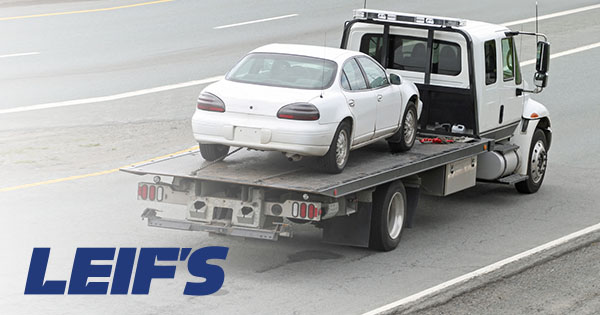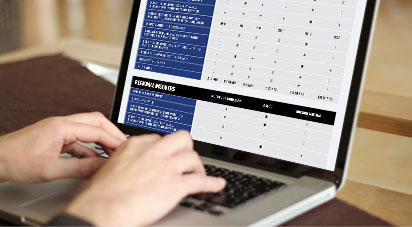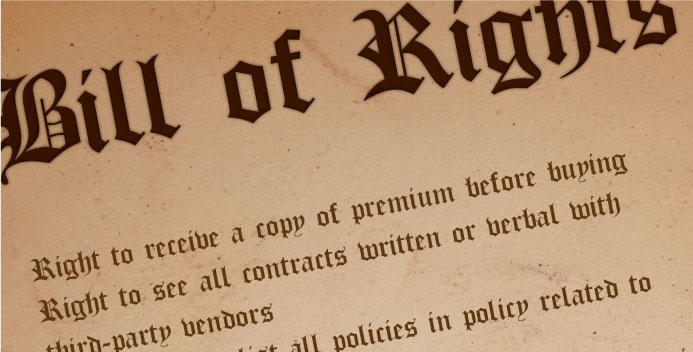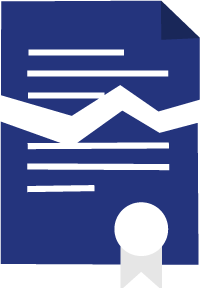SCRS report: State Farm’s parts ordering system cuts repairers’s profits
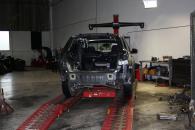
Report from the Society of Collision Repair Specialist on State Farms handling of parts ordering and how it affects auto body shops across the country:
Prosser, Washington, April 2, 2012 – From
2007 to 2009 State Farm Insurance, the nation’s largest auto insurer,
tested a parts ordering program with repair facilities who participated
in their DRP program in California and Indiana. That program revolved
around a parts discount to State Farm from the auto manufacturers, which
was facilitated through an electronic parts ordering program. In April
of 2011, nearly two years after the conclusion of the previous test
program, State Farm released an online video discussing future parts ordering initiatives. That same month, Insurance & Technology published an article referencing a report
released by Stephen Applebaum and the Aite group, which clearly stated
that “State Farm is leading the way to greater control of the auto
repair procurement process with its announcement of a new electronic
parts-ordering initiative.”
While the article
was brief, Applebaum’s post on the Aite site elaborated that “the U.S.
collision industry repairs about 10 million vehicles annually, at an
average cost of about US$3,000 each, for a total of approximately US$30
billion. Of that, parts represent 33%, or about US$10 billion. Given the
level of influence carriers exert and that much being spent on parts,
it is inevitable that carriers will seek to gain greater visibility
into, and control over, the parts procurement process. After all, each
percentage point is worth US$100 million to someone.” Less than a year
later, in the early months of 2012, the carrier began testing the
program – an online parts-ordering/bidding software program developed by
a New Zealand firm called PartsTrader – in areas of the United States
such as Tucson, AZ and Birmingham, AL.
State Farm
facilitated the rollout in test areas with both the parts vendors as
well as the repair shops in their network. In a letter issued to parts
suppliers, State Farm wrote “All repairers currently participating
in the Select Service program have agreed to use automated replacement
parts locating services or applications if requested by State Farm, and
will be required to use PartsTrader. Suppliers registered with
PartsTrader will have the ability to provide competitive pricing on the
entire parts order through the quoting process which may provide
opportunities to increase sales volumes.” Other communications
were sent to repair facilities outlining the electronic parts ordering
and estimate workflow process. Under the program, State Farm instructs
the repair facilities to follow workflow steps, such as:
- Write a complete estimate with the OEM parts listed in the database and save in preliminary status.
- Export the estimate to your EMS directory. The PartsTrader software will pull the parts list into the application automatically.
- Within PartsTrader, forward the quote request to all part suppliers (quote time is adjustable by the repairer).
- When the quote time expires, review quote responses and order selected parts.
- Update the estimate with the selected part types and prices.
- Upload the committed estimate.
Note:
The same procedure should be followed on supplements. In cases where a
“recycled” assembly is required, select the “recycled” part type on the
estimate with a price of zero dollars so that the suppliers recognize
the need for an assembly.
State Farm Auto
Claims Consultant, George Avery, was quoted in a CollisionWeek interview
discussing the new program in April of 2011, indicating that “the
feel this time is a little bit different in that we are committed to
exploring this because we see the benefit for the repairer, the
supplier, the customer and, of course, us. The test before, there was a
lot of learning there, that points to the fact that parts procurement
offers a lot of efficiencies to be gained.” However as the
test rolls out, many in the industry are wondering what benefits truly
exist for the repairer, the supplier and the customer? The benefit to
State Farm is clear; there is an obvious savings for the carrier through
the use of the program.
Below is a real
example of the resulting quotes from the bidding process for parts
necessary to repair front-end damage on a job requiring only 4 parts: 3
bumper components and a lamp.

These
slides are screen captures of pricing bid on by OEM dealers where the
PartsTrader program is currently testing in the United States. As you
can see, one dealer maintained the OEM MSRP list price, while the other
two offered a 15.46% discount off the list price, reducing the list
price by $54.42. You will also notice that the margin on the discounted
parts is 2% lower than the part with the MSRP pricing. What this means
is that the repair facility will make $25.00 less profit on this part and the dealer will make $29.42 less in profit. The insurance carrier will save $54.42
due to the reduction in the list price. Will the consumer ever see any
of these savings, or do these savings increase the carrier’s profit
margin?

On this part, the
two of the dealers have offered a 23.52% discount on the list price,
with a 2.01% decrease in margin. This equates to a $5.66 loss in profit to the repair facility, a $7.97 loss to the dealer and a $13.63 savings to the insurance carrier.

On this part, two
of the dealers have offered a 23.39% discount on the list price, with a
2% decrease in margin. This equates to a $2.57 loss in profit to the repair facility, a $3.62 loss to the dealer and a $6.19 savings to the insurance carrier.

As you can see, on
this part, two of the OEM dealers have offered a 22.09% discount on the
list price, with a 2% decrease in margin. If the shop selected OEM,
this equates to an $18.29 loss in profit to the repair facility, a $25.20 loss to the dealer and a $43.49
savings to the insurance carrier. However, this slide also contains 3
“Recycled Grade A” part options. The cheapest used part is listed at
$25.00 cost. Hypothetically, if the repairer were to bill this part with
a 25% markup, that part would list on the estimate for $31.25,
producing $6.25 in profit to the repair facility. In comparison to the
OEM part with the OEM MSRP, the used part could equate to a $62.65 loss in profit dollars to the repair facility, while saving the insurance carrier $165.61.
Looking at this
scenario, a small repair with only 4 front-end parts, the numbers appear
to be staggering. If the cheapest part was selected in each of these
occasions, the overall parts order would result in the repair facility
losing $95.88 in
parts profit in comparison to if all the parts were ordered using
traditional OEM MSRP; conversely, this program will save the insurance
company $239.85.
Every collision
repairer could ask themselves, is this a win-win situation? For anyone
looking to understand the impact on their business, there are numerous
resources available to repair facilities to analyze the economic impact
that adjustements to profit centers, such as this, can have on your
bottom line.
Aside from the
loss of real money associated with parts dollars, there are additional
expenses to consider as well. There is a waiting period before an
estimate can be locked while the repair facility waits for quotes. Once
those quotes are received, each part price needs to be manually
re-entered into the estimate before it can be committed. This particular
example only has 4 parts; how much administrative cost is associated
with that task if there are 40 parts? What is the cost of potentially
dealing with multiple suppliers to maintain the most “competitive
price”?
It is too early to have answers to many of these questions, but
repair facilities in the U.S. would be well served to start looking at
how programs such as this impact your business now, and how you wish to
react to them in the interest of your business’ health and welfare.
About SCRS:
Through its direct members and 39 affiliate associations, SCRS is
comprised of 6,000 collision repair businesses and 58,500 specialized
professionals who work with consumers and insurance companies to repair
collision-damaged vehicles. Additional information about SCRS including
other news releases is available at the SCRS Web site: www.scrs.com. You can e-mail SCRS at the following address: info@scrs.com.

